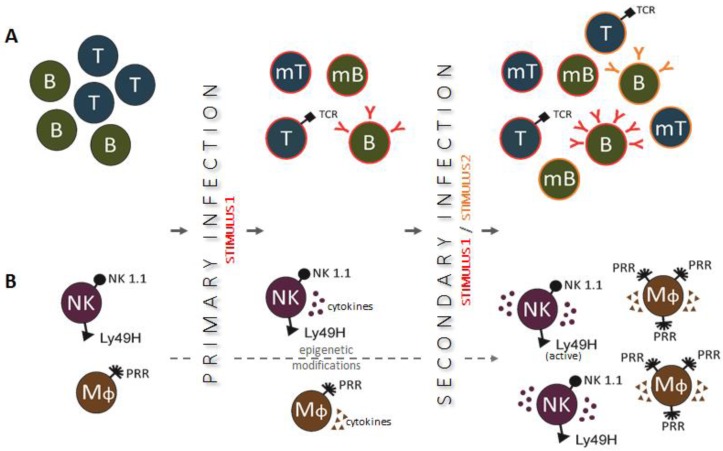Figure 1.
Primary and secondary immune responses in adaptive (panel A) and innate (panel B) immunity. (A) After recognition of an infectious agent, naïve T and B cells transform into antigen-specific effector cells, which can survive as memory cells and respond more robustly to the same infectious agent during secondary infection; (B) Innate immune cells, activated during primary infection, undergo epigenetic reprogramming and become primed to respond more effectively to secondary stimulation caused by a related or unrelated infectious agent.

